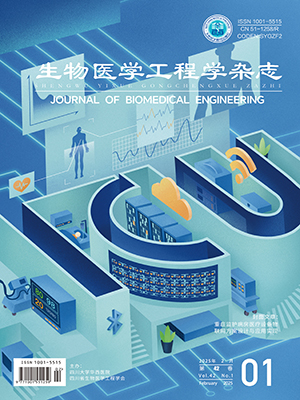We developed a three-dimensional finite element model of the shoulder glenohumeral joint after shoulder arthroplasty including humerus shaft, scapular, scapular cartilage and eight muscles, while each of the muscles was simulated with 50 spring elements. To reduce the element number and improve the analytical precision, we used mixed tetrahedral and hexahedral elements in the model. We then used the model to calculate the biomechanics of the shoulder glenohumeral joint after hemiarthroplasty during humeral external rotation. Results showed that the maximum joint reaction force was 374.72 N and the maximum contact stress was 6.573 MPa together with the contact areas at 40° external rotation. These might be one of the reasons for prosthetic disarticulation, and would provide theoretical bases to prosthetic design.
Citation: ZHANGLinlin, ZHUMing, SHENLing, ZHENGFeng. Contact Analysis between Artificial Humeral Head and Glenoid Fossa During Humeral External Rotation. Journal of Biomedical Engineering, 2014, 31(1): 120-123. doi: 10.7507/1001-5515.20140023 Copy
Copyright © the editorial department of Journal of Biomedical Engineering of West China Medical Publisher. All rights reserved




